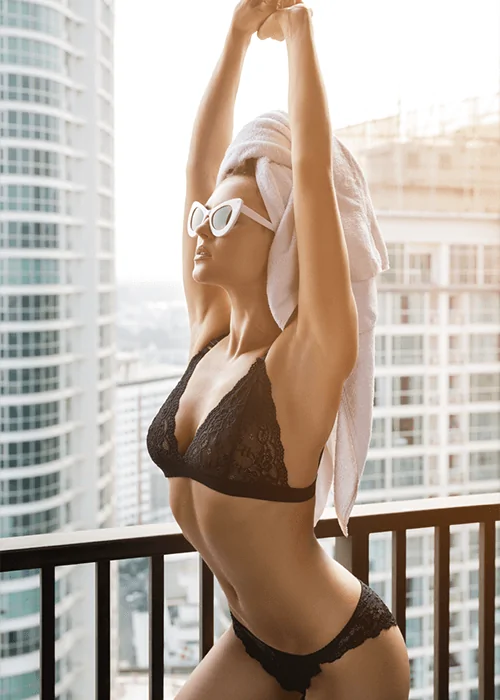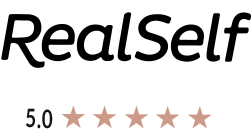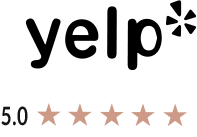The aging brow takes on a “tired” and sometimes “angry” look. Furrows between the eyes appear, transverse forehead lines develop, and the eyebrows descend. A properly performed brow lift can treat these complaints without creating a “startled-look.” Dr. Wallach tailors multiple different brow lift procedures to accommodate his patients needs. A non-surgical lift can take ten to twenty minutes with little to no downtime using filler materials and/or Botox/Dysport, while a more permanent lift using various surgical techniques usually takes between one to two hours with a recuperation time of seven to ten days.
Candidates
A good candidate is a person who is otherwise healthy and complains about sagging of the eyebrow which might cause lateral upper brow hooding, about transverse forehead wrinkles and vertical forehead wrinkles between the eyebrows.
Cost
The fee will vary by the technique used. The fee might range from $7500-$12000.
Consultation
During the consultation, you will spend a lot of time with the doctor reviewing your surgical goals. An exam will then be performed and a surgical plan will be discussed with you at length.
Risks
A brow lift is a very safe procedure with few if any risks of complications. Most common early post-operative issues include some scalp numbness, bruising, and swelling. Hair loss at the incision site can occur as well, but this is often temporary.
Procedures
Brow lifts are often performed under sedation or general anesthesia. The forehead and scalp are injected with local anesthesia and then the procedure is performed either through several small incisions in and around the scalp for an endoscopic brow lift, or through a transverse scalp incision for an open browlift. Modification of the incision will depend upon the patient’s anatomy. The brow can then be lifted and the underlying muscles can be treated. The scalp is elevated by either using supporting devices like endotines or sutures, or by removing some scalp skin. The incisions are then closed and a loose dressing is wrapped around the head.
Surgical options to treat aesthetic brow issues come in two basic varieties: Open techniques or Endoscopic techniques. Both are excellent approaches to treat the brow, but as with everything a plastic surgeon can offer, the surgical technique must be tailored to the patient’s anatomy and their goals. Therefore, not all procedures are appropriate for everyone. So why one technique over another?
BROWPEXY OR TRANS-BLEPHAROPLASTY BROW SUSPENSION
A browpexy procedure is performed through an upper blepharoplasty (eyelid) incision. This is a limited incision approach to suspend the brow to the forehead. Often this is done with sutures but can be done with mini-endotines as well. The endotine is a device that looks similar to a carpet tack and is secured to the outer layers of the skull. The brow is elevated and secured to the endotine to provide the brow elevation.
Advantages
- Limited incision, treats lateral hooding of the eyebrow.
Disadvantages
- Only treats lateral brow descent.
DIRECT BROW LIFT
The direct brow lift is a modification of the open procedures in which a limited incision is used. This requires an incision just above the eyebrow. An ellipse of skin only is removed to raise the position of the eyebrow.
Advantages
- Limited incision hidden along the upper border of the eyebrow, can be done under local anesthesia, good for bald patients.
Disadvantages
- Does not treat forehead lines significantly, does not treat Glabellar or “11” lines.
ENDOSCOPIC BROW LIFT
This is a limited incision approach using three to five small incisions hidden in the hairline. When using this approach a small camera is inserted to allow visualization of the brow region; this eliminates the more traditional incision that extends from ear to ear across the scalp. The brow descent can be treated, the central glabella “11” lines can be treated, and the transverse forehead lines can be softened. The forehead is raised and secured superiorly. Some surgeons create little tunnels in the outer skull surface to secure the scalp with sutures. Dr. Wallach prefers using tiny devices called Endotines to provide fixation. The Endotines look similar to small carpet tacks. They are a great addition to the tools available for brow lifting. However, in some instances, Dr. Wallach may use cortical tunnels, which are tiny drill holes in the scalp, to elevate the brow.
Advantages
- Limited incision procedure, lower risk of alopecia (hair loss), and lower incidence of scalp numbness.
Disadvantages
- May not treat transverse forehead wrinkles as well as with the open technique, may get some return of brow ptosis (droop) due to inadequate fixation or from gradual return of forehead descent.
LATERAL BROW LIFT
Is a modification of an open brow lift in which a limited incision is made in the lateral hairline, many times this can be accomplished by extending the facelift incision in the temporal hair line. This allows for improvement of the lateral brow by elevating it and improving lateral brow hooding.
Advantages
- Limited incision procedure, and decreased risk of scalp numbness.
Disadvantages
- Will not treat Glabella “11” lines or transverse forehead lines, will not address discrepancy of short or long forehead adequately.
MID-FOREHEAD LIFT
A mid-forehead lift is similar to a direct brow lift in that it is a modification of the open procedures in which a limited incision is used. This requires an incision within mid-forehead crease lines. An ellipse of skin is removed to raise the position of the eyebrow.
Advantages
- Limited incision hidden within a natural transverse forehead crease, it can be done under local anesthesia, it can be performed on bald patients.
Disadvantages
- Will treat forehead lines better than a direct brow lift, it does not usually treat Glabellar or “11” lines.
OPEN BROW LIFT TECHNIQUES
Open Brow lift techniques are used for patients that want a longer lasting result than with neuromodulators and fillers. Open brow lift techniques can treat the transverse forehead lines by trimming some of the muscle that causes them. It can also treat the “11” lines by undermining them from inside or removing some of the corrugator muscle that causes them. Of course, brow elevation is also performed. Incisions are designed based upon the patient’s anatomy. For instance if a patient has a low lying hair line, a coronal incision which is placed a few centimeters behind the hairline is performed so that the forehead is lengthened and provides a better balance with the lower two-thirds of the face. The incision is hidden in the hairline but will remove some hair. An anterior hairline incision which is placed along the front of the hairline is performed for the opposite reason when the forehead is too long. This preserves the hairline and shortens the forehead and can even bring the hairline lower to improve the facial balance. Modifications of these incisions such as a modified coronal or modified anterior hairline incision can take into account for long or short foreheads with thinning hairlines, or even baldness. Learn more about open vs endoscopic brow lift surgery.
Advantages
- Often the longest lasting results for all brow lift techniques, less or no need for further neuromodulator/filler use for the brow, better treatment for deep furrows, long lasting facial balance.
Disadvantages
- Some scalp numbness that usually improves with time, an incision scar (coronal incision hidden in hairline), some downtime after surgery, will remove some scalp hair using a coronal incision.
NON-SURGICAL BROW LIFT
Otherwise known as a Chemical Brow lift, this can be achieved with the common neuromodulators, BOTOX®/Dysport. There are several things that can be accomplished during a non-surgical brow lift. The “11” lines are deep furrows in between the eyebrows caused by overactive corrugator muscles. The deep transverse forehead lines are the result of the overactive frontalis muscle, and the lateral crow’s feet are due to the overactive orbicularis muscle around the eye and present as radial lines at the corners of the eyes. When using the neuromodulators, the muscles that cause these deformities can be neutralized for four to six months at a time. In treating the lateral eyebrow region near the crow’s feet, the lateral upper brow can be lifted. Using the neuromodulators regularly will help minimize the risk of deep “etching ” of the skin that happens with repeated motion in those regions seen especially frequently between the eyebrows. The “etching” occurs from the repeated motion and the atrophy of the soft tissue between the skin and underlying muscle. Sometimes a combination of treatment using filler material like the hyaluronic acid products (Restylane™, Restylane Lyft, and Juvederm™) will improve the “etching.” In addition, the filler materials can be used to raise the lateral brow by filling the area near the eyebrow. In addition, some patients have what is called temporal wasting along the side of their brow which can be treated again with fillers or Sculptra. These products are not permanent and have to be repeated a few times per year.
Advantages
- Many patients love these products because the fillers last between six and twelve months and the neuromodulators last between four to six months, there is very little to no downtime after injection, the injection of these products does not require a surgical procedure, and there may or may not be minor bruising and/or swelling.
Disadvantages
- The results are not permanent, the neuromodulators may cause brow or eyelid ptosis, the filler products may be noticeable in some instances, they do not work well for severe forehead ridging.
“Beauty is the internal light that emanates from within. To me, the true form of beauty is one’s personality that shines through.”
Steven Wallach, MD
Recovery
The recovery is usually very straightforward. A small drain may have been placed and this is often removed within a few days of the procedure. Scalp sutures or staples are usually removed within 7-10 days. Patients are recommended to limit exertion for several weeks but can go back to light duty within a week.
FAQs
Can a brow lift be done under local anesthesia?
Yes, a brow lift can be done under local in some instances
Does endoscopic brow lift raise hairline?
An endoscopic brow lift may raise the hairline slightly in the areas where the brow is fixated.
Does a brow lift get rid of forehead wrinkles?
A brow lift will likely soften the deeper forehead wrinkles that are caused by animation.
Does insurance pay for brow lift?
Insurance does not pay for a brow lift.
Does a facelift include a brow lift?
Facelifts do not include a brow lift, but can be performed in conjunction with a facelift.
How can I lift my eyebrows?
The eyebrows can be raised with botox, or various surgical brow procedures.
Does brow lift change eye shape?
A brow lift will not change eye shape but can lift the lateral brow hooding which may make the eye look smaller when it is lifted..
How can I raise my eyebrows in one day?
Botox will take about 5-7 days to work and a brow lift will raise them during surgery.
How do I know if I need a brow lift?
You should be seen in consultation to be properly evaluated.
How much does a brow lift cost?
The fee for this procedure ranges from $7500-$15000.
How long do brow lifts last?
An open brow lift gives a long lasting result. An endoscopic brow lift may need to be redone several years later.
How much is a brow lift?
The fee for this procedure ranges from $7500-$15000.
How long does a brow lift last?
An open brow lift gives a long lasting result. An endoscopic brow lift may need to be redone several years later.
Is a brow lift permanent?
An open brow lift gives a long lasting result and may be permanent. An endoscopic brow lift may need to be redone several years later.
Is eyebrow lift dangerous?
A brow lift is a safe procedure with very few complications.
Is eyebrow lift surgery painful?
The brow lift is usually not a very painful procedure.
What is a mini brow lift?
A mini-brow lift often refers to a lift done in the mid-forehead, a lateral lift, or directly over the eyebrows for elevation.
What age should you get a brow lift?
There is no specific age to undergo the procedure. It all depends upon your physical appearance and aging of the brow.
What is endoscopic brow lift?
An endoscopic brow lift is a procedure in which a small camera is used to visualize the soft tissues elevated through several small incisions to perform the brow lift.
What can I expect after a brow lift?
After a brow lift, the brow should be elevated in a more youthful aesthetically pleasing position.
What is the difference between a brow lift and blepharoplasty?
The brow lift is to raise the brow, the blepharoplasty is performed to treat the eyes.
What is a direct brow lift?
A direct brow lift is sometimes performed for patients who desire improvement in the position of the eyebrow in a direct fashion. That means an incision is made just above the eyebrow itself and a small crescent is excised directly. This will only treat the eyebrow position and not forehead wrinkles or corrugator muscle issues.
When can I wash my hair after brow lift?
I allow my patients to shower the next day after surgery.
Will brow lift cause hair loss?
Sometimes there may be some hair loss at the incision sites, but often this grows back.
What is a brow lift?
A brow lift is an operation that can improve the eyebrow position when it is low, can soften forehead transverse wrinkles, and can improve the 11 lines in between the eyebrows. When the eyebrow is raised during a brow lift, the hooding over the lateral upper eyelid is often softened. Many times the amount of skin removed during an upper lid blepharoplasty procedure is reduced after a brow lift. Open brow lifts can soften the forehead transverse lines by reducing the volume of muscle. The 11 lines between the eyebrows can be reduced by undermining the depression, filling it with fat or filler product, and/or removing some of the muscle that causes the creases. Brow lifts can be performed using an open technique or an endoscopic technique.
Where are the incisions made for a brow lift?
Depending upon the technique used, the incisions will vary. Commonly with an open brow lift technique, a coronal incision is made within the hairline from ear to ear. Variations of open techniques can use gull wing incisions, an anterior hairline incision, or variations of coronal incisions as well. Endoscopic brow lifts often use 3-5 small vertical incisions that are 1-2 inches long within the hairline.
What is an endoscopic brow lift and how is it different from a coronal brow lift?
An endoscopic brow lift uses 3-5 small incisions in the hairline to gain access to treat the brow. A small camera is inserted to visualize the cavity and instruments are used to elevate the brow and improve the forehead appearance. Open brow lifts are most commonly performed through a coronal incision to expose the brow region. The incision is within the hairline and usually runs from ear to ear. For an endoscopic brow lift, endotines (small hook like structures), cortical tunnels, or even screws are used to help support the forehead in its new position. This is not necessary with an open brow lift. In an open brow lift some of the scalp skin and hair is removed to elevate the brow and hold it in position.
What does a brow lift treat?
In general, a brow lift treats the sagging eyebrow. Ideally the brow lift raises the lateral brow to a more rejuvenated position without over elevating. This should avoid the surprised look that people sometimes fear after having a brow lift. Brow lifts can treat a short forehead or be used for access to reduce the over all length of the forehead. It can also treat the transverse forehead lines as well as the 11 lines in between the eyebrows. Bunny lines that appear on the side of the nose can also be treated. In some cases it can even raise the nasal tip.
Why are there different open brow lift incisions?
When using an open brow lift technique one has to sometimes modify the incision used to accommodate for different hairline positions. The coronal incision that is setback within the hairline is the most common approach. It can help improve a short forehead, but in a person with a high forehead, it may make it appear longer. The anterior hairline incision is made along the front of the hairline. It maintains the position of the hairline so the forehead remains in balance with the rest of the face. There are other modifications of this approach depending on an individual’s hairline.
What is a mid-forehead lift?
A mid-forehead lift is similar to a direct brow lift but the incision is placed within a transverse forehead crease. This is a reasonable option in a bald man with light skin.
What is a lateral brow lift?
A lateral brow lift can be performed through a lateral brow incision either right at the hairline or just within the hairline. This can be performed using a limited approach using an endoscope or bluntly with scissors. A direct approach using a slightly longer incision sometimes combined with the use of a lighted retractor will allow most things to be done through this method. From this approach the surgeon can release the soft tissues adequately to raise the lateral brow and improve the upper lid hooding.
What is a brow pexy?
A brow pexy is a procedure performed through the upper eyelid incision. The brow can be tacked to the orbital rim from this approach. Small endotines can be used to secure the brow as well from this approach. The endotines are secured to the bony orbital rim and the soft tissue is secured to the endotines.
What is a chemical brow lift?
A chemical brow lift can be performed in some individuals to lift the lateral brow using Botox/Dysport. Placing some Botox/Dysport just below the tail of the lateral brow will help raise the brow by neutralizing the orbicularis oculi muscle. Botox/Dysport can also be used for corrugator treatment to improve the 11 lines. The transverse forehead lines can be treated with Botox /Dysport as well.
I have a lot of skin hanging over my upper eyelids. Should I just get my upper lids done?
This is a common question. Often the upper eyelid excess skin may actually be the result of some brow ptosis. Improving the brow ptosis usually reduces the amount of skin in the upper eyelid that may need to be excised during a blepharoplasty.
Will my forehead lines go away after I have brow lift?
Depending upon the technique, the forehead lines can be treated as well. The forehead muscles exert a lot of energy to keep the brow elevated in some individuals resulting in deep-set transverse lines. When the brow is elevated surgically, this releases the tension on the frontalis muscle and often the lines soften. Further softening of these lines can be accomplished during an open brow lift by surgically thinning the muscle.
Will I have a funny forehead after a brow lift?
Performing a proper brow lift should not make the forehead look unusual. One can control the length of the forehead and the position of the brow through proper surgical technique. Frontalis muscle, that causes the transverse forehead lines, and the corrugator muscle, which produce the 11 lines, can be modified as well during surgery.
Will my hairline change with a brow lift?
A properly designed brow lift should not alter the hairline to any great extent. Open brow lift incisions can be adjusted to compensate for thinning hair, high or low foreheads, and even for balding scalps.
How do you perform the brow lift?
There are several ways to perform this surgery. I perform an endoscopic brow lift using 3-5 small incisions within the hairline. A small camera and other special instruments are used during this procedure. Sometimes an open brow lift is performed. This is a more traditional approach using a longer incision usually within the hairline.
Should I have my eyes done instead?
Brow lift and eyelid surgery are two very different operations that treat different things. In fact, sometimes patients have their eyes done and too much skin from the upper eyelids is removed. The removal of too much skin can actually pull the eyebrows even lower and give the patient an angrier look! Trying to correct the angry look at this point by performing a brow lift may prevent the eyes from closing properly and therefore the brow lift surgery may not be able to be performed successfully. On the other hand a brow lift can be performed successfully in conjunction with eyelid surgery.
I am afraid to get a brow lift because I don’t want to get that surprised look. How do you avoid that?
Brow lift procedures are wonderful procedures to rejuvenate the upper 1/3 of the face. The startled or surprised look that patients are afraid of has placed a stigma on brow lift procedures. In actuality, a properly performed brow lift avoids this appearance while rejuvenating the forehead by softening vertical furrows between the eyebrows, relaxing the transverse forehead lines, and elevating the eyebrows to a more youthful position.














